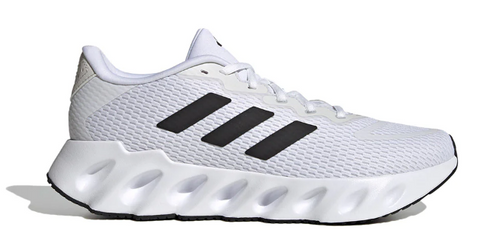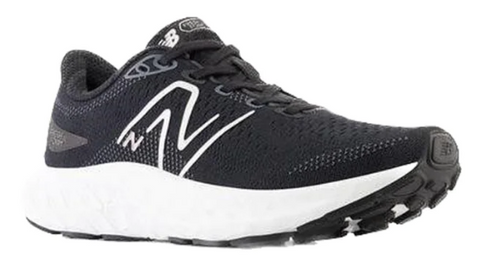Jogging vs. Running: Which Is the Right Cardio for You?
Posted by Sports Central onJogging and running are two popular cardio exercises that offer numerous health benefits. Jogging is often considered a slower form of running, focusing on maintaining a steady pace. On the other hand, running as an exercise involves a faster pace and higher intensity, making it suitable for those seeking specific fitness goals or competing in races.
Choosing the right activity is crucial as it depends on individual fitness goals. By understanding the differences between jogging and running, individuals can make informed decisions to achieve their desired fitness outcomes.
Pace and Intensity
The key difference between jogging and running lies in pace and intensity. A jogging pace is generally considered slower than running, while running involves a faster pace and higher intensity. However, it's important to note that there are no strict rules for distinguishing between the two based on pace alone.
There is also a cutoff point between jogging and running. If you cover the equivalent of 6 miles or more in an hour (10-minute per mile pace or 30 minutes for a 5K race), then you're considered to be running; if you cover less than that, you're likely jogging.

People's running speeds can also vary depending on factors such as the distance they're covering, their age, and the terrain. For instance, completing a 10-mile trail run in muddy conditions in 1 hour 40 minutes would not be considered a jog, despite the slower pace.
In heart rate and calorie burn, running generally leads to a higher heart rate and more significant calorie expenditure than jogging. The increased intensity of running requires more energy and thus results in a higher heart rate and calorie burn.
Proper Form
Another jogging and running difference is the proper form. In jogging, the stride tends to be shorter, and the frequency of steps is typically lower than in running. This shorter stride is well-suited for a slower pace and allows joggers to maintain a comfortable and sustainable rhythm. In contrast, running involves longer strides and a higher step frequency, optimizing speed and efficiency.

Joggers often use a midfoot or heel strike, where the heel makes initial contact with the ground, followed by a rolling motion towards the toes. This is less jarring and reduces the impact on joints at slower speeds. Meanwhile, runners often utilize a forefoot or midfoot strike, where the initial contact is closer to the foot's front. This is more efficient for propulsion and typically at higher speeds.
Runners use a stronger arm swing to keep their balance and move forward, especially when running faster. Joggers tend to have more relaxed arm movement, with arms held closer to the body. This conserves energy and complements the slower pace.

Tips On Maintaining Good Posture And Stride
- Maintain a straight posture. Keep your head up, your back straight, and your shoulders level. Your shoulders should be under your ears and your pelvis should be in a neutral position.
- Ensure you’re not leaning forward or back at your waist, which some runners do as they get fatigued.
- Relax your hands as you run, keeping them at waist level. Avoid tightening them into fists.
- Keep your arms pumping straight back and forth, parallel to your body. Avoid crossing them in front of your torso.
- Avoid overstriding by reaching out with your legs far before your body. This puts too much pressure on your knees, shins, and other muscles and joints.
Training Objectives
Jogging exercise and running can fulfill different fitness objectives and offer various benefits. Both activities contribute to better physical and mental health. Jogging is generally associated with a slower pace and lower intensity, making it suitable for beginners or those seeking a low-impact exercise option.
Running involves a faster pace and higher intensity, which can help improve cardiovascular fitness, endurance, and calorie burn. Both jogging and running can aid in weight management, strengthen muscles and bones, and reduce the risk of chronic diseases like diabetes and hypertension.

Proper Footwear
Wearing appropriate footwear is crucial for several reasons. The right shoes can help protect your feet, provide support, and enhance your performance while reducing the risk of injuries.
Here are some key differences between running shoes and jogging shoes:
|
Differences |
Jogging Shoes |
Running Shoes |
|
Cushioning |
Less cushioning for lower-impact activity |
More cushioning to absorb impact and provide shock absorption during high-impact activities |
|
Flexibility |
Need to be more flexible for slow pace and low-intensity activity |
Designed to flex and bend with the foot's natural movement during running |
|
Heel Height |
Lower heel-to-toe drop |
Higher heel-to-toe drop |
Choosing the right Shoes for Running or Jogging
When selecting the right shoes for your individual needs, consider the following guidance:
-
Perfect fit
Choose shoes that fit well and provide ample room for your toes to move freely. Our adidas Men's Switch Run Running Shoes combine fitness with style seamlessly. Crafted with a focus on performance, the lightweight design, Adiwear outsole, and 3D heel counter ensure distraction-free running. These shoes are eco-conscious, featuring at least 50% recycled materials, allowing you to stay fit and environmentally responsible.
adidas Men Switch Run
-
Comfortable shoes
Opt for comfortable shoes that feel good on your feet. The New Balance Men Fresh Foam X EVOZ v3 offers ultimate comfort. Its Fresh Foam X midsole offers unparalleled cushioning for sublime comfort. The sleek no-sew upper, crafted from soft textiles and engineered mesh, ensures a snug fit. It's a custom-fit masterpiece with an integrated rubber outsole and adjustable lace closure.
New Balance Men Fresh Foam X EVOZ v3
-
Support
Wear shoes that offer adequate arch support and stability for your feet when running or jogging. Under Armour Women's UA W Charged Verssert SPKLE boasts exceptional support. Its mix-material upper blends suede, leather, and breathable mesh for durability and ventilation.
The EVA sock liner ensures a comfortable step-in experience, while the Charged Cushioning® midsole offers unmatched responsiveness and durability. A solid rubber outsole provides robust support in high-impact areas without adding unnecessary weight.
Under Armour Women UA W Charged Verssert SPKLE
-
Purpose
Consider the type of activity you'll engage in—running or jogging, and choose shoes accordingly.
Sports Central offers a collection of running shoes that cater to individual needs. You can explore their range to find the right pair that suits your requirements.
When choosing between jogging and running, the decision should be based on your fitness goals and preferences. Both activities offer numerous health benefits, including improved cardiovascular fitness, weight management, and reduced risk of chronic diseases. Whether you prefer a slower and lower intensity or a faster and higher intensity, the choice between jogging and running is entirely up to you.
Finding the right pair of shoes can significantly impact your performance and comfort during exercise. To enhance your jogging or running experience, get your running footwear and jogging outfit ideas only at Sports Central. Take a step in the right direction and explore the options available at Sports Central stores nationwide or online. Happy jogging or running!



